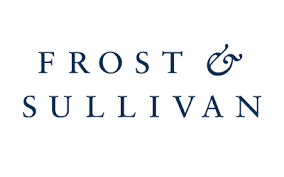SIFT Analytics in modernising an age-old industry
)
“SIFT Analytics Group was tasked to develop a geospatial data analytics platform to support the existing system for agriculture land use management, in order to build the Smart Farming System in Thailand. Our teams in Thailand and Singapore worked on a plan to develop a robust solution that could support a variety of deployment options, making it simple to include multiple workflows between different environments,” said Gerald Tan, Managing Director at SIFT Analytics Group.
He also shared that one of the key enhancements to the platform is the ability to publish and maintain predictive and advanced analytics models with ease, thus enhancing the value they are able to harness now, as well as providing a platform for the future.
Can you tell us how you arrived at this innovative concept?
With over 40% of Thailand’s workforce employed in the agriculture industry, agriculture has always been one of the important economic sectors in the country. Despite having nearly half of the workforce contributing to the industry, agriculture is currently on a decline and contributes to only 10% of the economy.
To improve and transform the industry, Thailand’s Statutory Government Organization, National Electronics and Computer Technology Center (NECTEC) introduced a new initiative program to develop new technologies to help transform its agriculture industry.
This concept was the direct result based on the requirements needed to fulfil the primary objectives of this project:
- To reduce the total time taken to process geospatial data, and to deliver quicker access to insight by information consumers
- To reduce the amount of manual labour taken to maintain farming activities and to devote more resources and manpower into expanding functionality instead.
- To allow for the flexibility to modify or enhance the system as the platform continues to expand and evolve.
- To reduce overall human resource effort, time and material cost to maintain a smarter and enhanced analytics platform for the community
With these objectives, SIFT Analytics Group was tasked to develop a geospatial data analytics platform to support the existing system for agriculture land use management, in order to build the Smart Farming System in Thailand.
Our teams in Thailand and Singapore worked on a plan to develop a robust solution that could support a variety of deployment options, making it simple to include multiple workflows between different environments. This allowed the solution to be robust and dynamic, yet able to support the sophisticated needs for different end user profiles.
What makes your project unique amongst similar technologies?
Farming is one of the oldest industries around, and to be able to couple new technologies, such as advanced analytics and machine learning, with this industry allows for a very uniquely satisfying experience. Being able to reinvent and improve on the wheel, adding “Smart” into “Farming” is an achievement for all of us.
The other unique thing about this project was being able to combine different components seamlessly to good effect. We were able to fulfil each and every objective set forth in this project, as our solution offers a wealth of spatial and predictive analytic tools, together with the integration of R and Python, as well as the collaborative flow across different platforms.
We built an environment capable of more than just publishing workflows, but collaborating more effectively with different members and automating the process of analytics workflows. One of the key enhancements to the platform is also the ability to publish and maintain predictive and advanced analytics models with ease, enhancing the value we are able to harness from it now, as well as providing a platform for the future.
Big data has certainly become integral across industries. What was it like to work with the agriculture sector on this project?
Working with the agriculture sector was a great pleasure, and very rewarding.
Unlike most other industries we worked with, agriculture covers large geographical areas of influence, and uses a lot of geospatial data. With a wealth of spatial data and tools, we were able to facilitate the implementation and delivery process smoothly and efficiently. Even though the vast amount of data we encountered was challenging, our teams have had much project experience with handling larger volumes of data, and were able to effectively manage the process within a challenging time frame.
Aside from that, our teams worked very closely with our client to explore potential use cases, so as to maximize the full value of the solution, including the likes of crop switching costs, monitoring crop consumption behaviour, and monitoring transportation logistics for distribution. We are confident that much more can be achieved within this industry, and we look forward to collaborating more closely with them.
Tell us about your future plans. What other innovations are you looking to launch for clients in the near term?
As we advance into the future, the line between data management and analytics becomes ever thinner. Data and analytics have typically been viewed separately, and also managed by separate teams with somewhat distinct profiles and expertise.
The convergence of the two reflects the need for users to have dynamic insight, that is, for users to now have information that they can easily and exhaustively explore, yet have the ability and accessibility of varying updated data sources to bring new dimensions into play when needed.
As we move forward, our upcoming solutions will be focused towards the new information user. It will be a combination of Automated Data Management, Augmented Analytics, and Decision Intelligence.
Automated Data Management solutions streamline enterprise wide data management tasks, speeding up operations and reducing costs. Automating and simplifying of operations is achieved through the use of artificial intelligence (AI) and machine learning (ML), and enhances data quality, metadata management, and data integration more easily.
Augmented Analytics uses AI and ML to supplement and support human intuition across different phases of the analytics cycle. Our solutions will help and augment users from the way data is created and prepared, to the way insights are uncovered, delivered and subsequently shared.
Decision Intelligence refers to a framework that helps operationalize insights and findings to decisions and outcomes. It will enhance the process where leaders design, align, monitor and streamline decision models and process workflows. Decision management and modelling solutions allow for the incorporation of AI and ML to automate, track, audit, fine tune, and document decisions made, and cyclically enhance the process. As this process matures, customers frequently move from process automation to process optimization in order to drive toward an optimum return on investment.
To learn more about SIFT Analytics' solutions, please email marketing@sift-ag.com


 Cloud & AI Infrastructure
Cloud & AI Infrastructure
 DevOps Live
DevOps Live
 eCommerce Expo | DMEXCO Asia
eCommerce Expo | DMEXCO Asia

)
)
)
)
)
)
)
)
)
)
)
)
)
)
)
)
)
)
)
)
)
)
)
)
)
)
)
)
)
)
)
)
)
)
)
)
)
)
)
)
)
)
)
)
)
)

)
)
)
)
)
)
)
)
)
)
)
)
)
)
)

)
)
)
)
)
)
)
)
)
)
)
)
)
)
)
)

)
)
)
)
)
)
)
)
)
)
)
)
)
)
)
)
)
)
)
)
)
)
)
.png/fit-in/1280x9999/filters:no_upscale())
)
)
)
)
)
)
)
)
)
)
)

)
)
)
)
